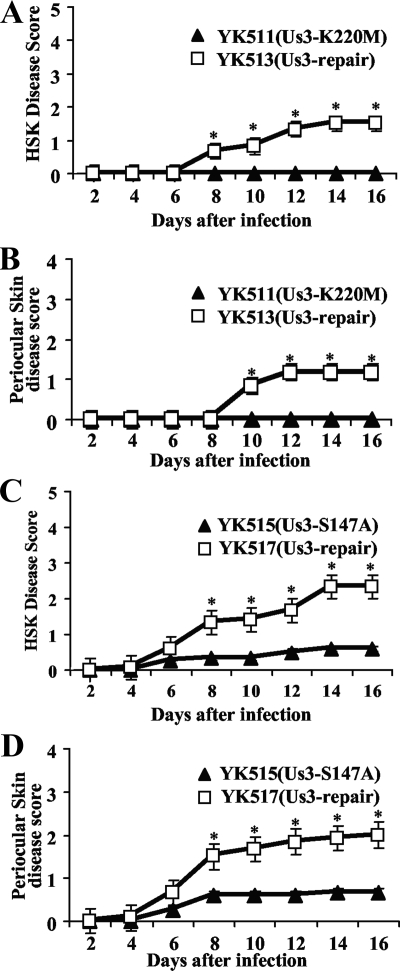FIG. 8.
Effect of the Us3-S147A and Us3-K220M mutations on HSK and periocular skin disease in mice. (A and B) Six 5-week-old female ICR mice were infected with 1 × 106 PFU YK511 (Us3-K220M) or YK513 (Us3-KM-repair) by corneal scarification and scored for HSK and periocular skin disease every other day for 16 days. The data shown are the averages and standard errors of the observations. A statistically significant difference between HSK and periocular skin disease scores in mice infected with YK511 (Us3-K220M) and those infected with YK513 (Us3-KM-repair) was noted (*, P < 0.01). (C and D) Two independent experiments were done, each using six 5-week-old female ICR mice infected with 1 × 106 PFU YK515 (Us3-S147A) or YK517 (Us3-SA-repair) by corneal scarification and scored for HSK and periocular skin disease every other day for 16 days. The results from two independent experiments (each with six mice) were combined. The data shown are the averages and standard errors of the observations. A statistically significant difference between HSK and periocular skin disease scores in mice infected with YK515 (Us3-S147A) and those infected with YK517 (Us3-SA-repair) was noted (*, P < 0.01).

